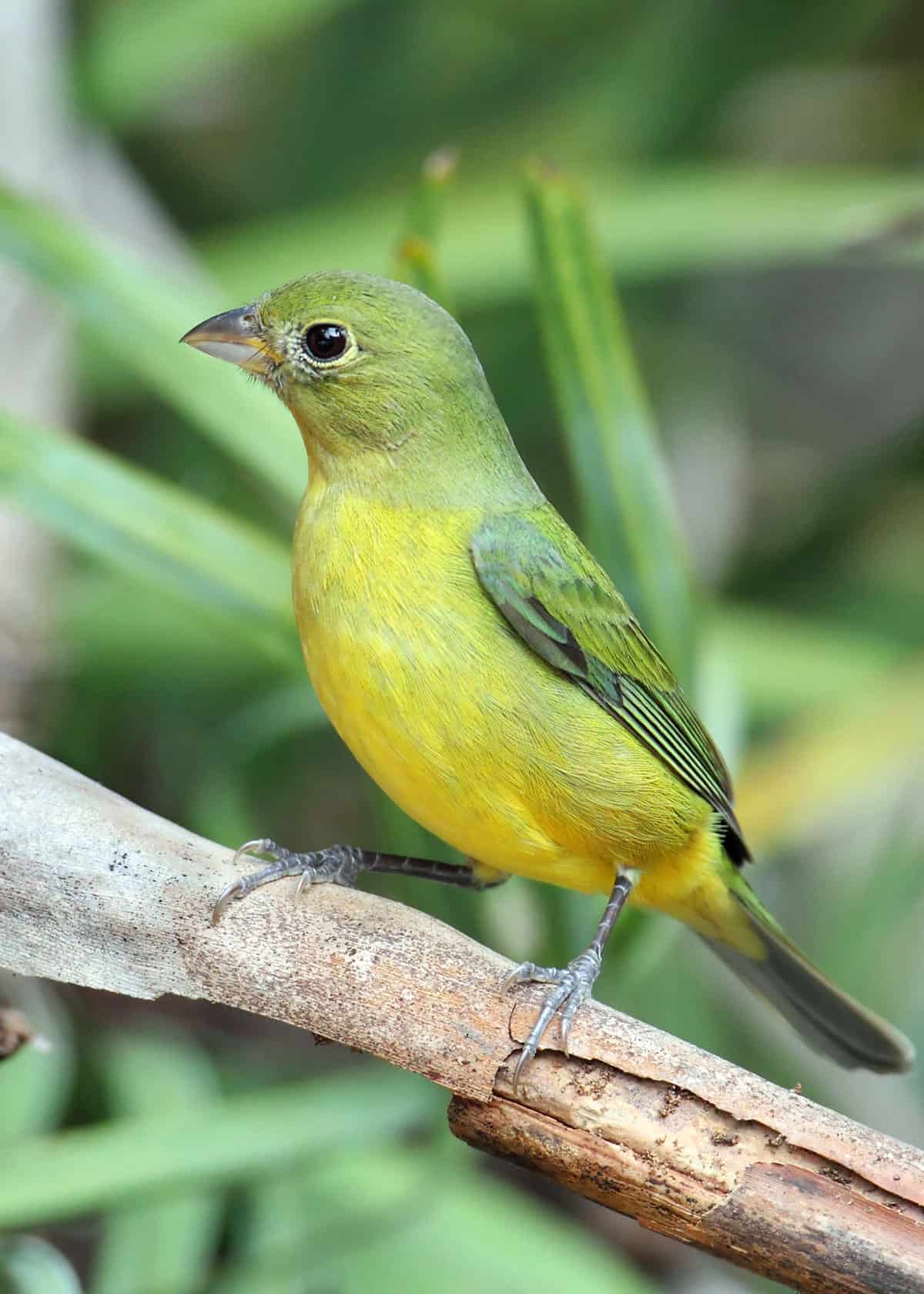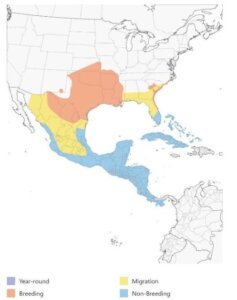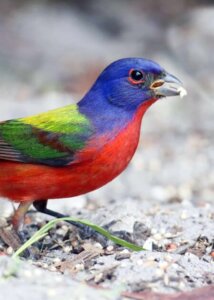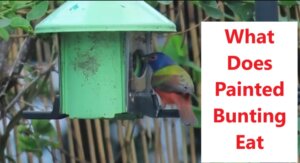What is the Lifespan of a Painted Bunting? Discover the Facts!
A Painted Bunting typically lives for about 10 years in the wild. This brightly colored bird faces challenges that can affect its lifespan.
The Painted Bunting, with its vivid plumage, is a favorite among bird watchers. But how long do these beautiful birds live? Their lifespan can vary due to factors like habitat, predators, and human activity. Understanding their lifespan helps us appreciate these colorful creatures and the efforts needed to protect them.
In this post, we will explore the lifespan of Painted Buntings, considering various elements that influence their survival. By learning more, we can contribute to preserving their population and ensuring they continue to grace our skies with their stunning colors.
Introduction To Painted Buntings
The painted bunting is one of the most beautiful birds in North America. Their vibrant colors make them a favorite among bird watchers. Understanding their lifespan can give insights into their behavior and needs.
Colorful Characteristics
Male painted buntings are famous for their bright colors. They have a blue head, red underparts, and green back. Females and young birds are usually green and yellow. These colors help them blend into their surroundings.
Natural Habitat
Painted buntings prefer brushy areas, forest edges, and thickets. They are mostly found in the southeastern United States during summer. In winter, they migrate to Central America and the Caribbean.

Credit: justbirding.com
Life Cycle Stages
The Painted Bunting is a colorful songbird with a fascinating life cycle. Understanding their life stages helps in appreciating their journey from egg to adult. The life cycle includes several stages, each crucial for their development and survival.
Egg To Fledgling
The journey begins in the nest. Female Painted Buntings lay 3-4 eggs per clutch. The eggs are small, white, and speckled. Incubation lasts about 11-12 days. The female incubates the eggs while the male guards the territory.
Once hatched, the chicks are tiny and helpless. They rely on their parents for food and protection. The nestlings grow quickly, developing feathers in about a week. By day 12-14, they are ready to leave the nest. This stage from egg to fledgling is critical for their survival.
Juvenile To Adult
After leaving the nest, young Painted Buntings are called juveniles. They remain near their parents, learning essential survival skills. Their plumage is duller compared to adults, providing camouflage from predators.
Juveniles undergo a molting process, gradually acquiring the vibrant colors of adults. This transition takes several months. By their first breeding season, they are fully mature and ready to start the cycle again.
Average Lifespan In The Wild
The Painted Bunting is a delightful bird known for its vibrant colors. But how long does this beautiful bird live in the wild? On average, Painted Buntings have a lifespan of around 5-7 years in their natural habitat. This lifespan can vary based on several factors, including environmental conditions and predation risks.
Factors Influencing Longevity
Several factors can influence the lifespan of a Painted Bunting in the wild. These include:
- Predators: Natural predators like snakes, hawks, and cats can shorten their lifespan.
- Habitat Loss: Destruction of their habitat due to human activities can impact their survival.
- Climate: Harsh weather conditions can reduce their chances of survival.
- Food Availability: Lack of sufficient food sources can lead to malnutrition and death.
- Diseases: Illnesses and parasites can also reduce their lifespan.
Comparisons With Other Birds
How does the lifespan of the Painted Bunting compare to other bird species? Let’s take a look:
| Bird Species | Average Lifespan in the Wild |
|---|---|
| House Sparrow | 3-5 years |
| American Robin | 2 years |
| Blue Jay | 7 years |
| Cardinal | 3-4 years |
As seen, the Painted Bunting’s lifespan is relatively moderate. It lives longer than American Robins but not as long as Blue Jays. These comparisons highlight the unique survival traits of the Painted Bunting in the wild.

Credit: en.wikipedia.org
Lifespan In Captivity
Painted Buntings are small, colorful birds known for their vibrant plumage. Understanding their lifespan in captivity can help bird enthusiasts provide better care. Proper diet, care, and attention to health are crucial.
Diet And Care
A balanced diet is vital for a Painted Bunting’s health. They enjoy seeds, fruits, and insects. Fresh water should always be available. Regular cage cleaning prevents diseases and keeps them happy.
Providing a spacious cage with perches and toys keeps them active. They love to bathe, so offering a shallow water dish is beneficial. Proper lighting simulates natural conditions and supports their well-being.
Health Considerations
Regular health check-ups with an avian vet can catch issues early. Common health problems include mites, respiratory infections, and nutritional deficiencies. Observing changes in behavior or appetite can signal health issues.
Stress can shorten their lifespan. Keep their environment calm and stable. Avoid sudden changes and loud noises. Providing a consistent routine helps them feel secure.
By ensuring proper diet, care, and health monitoring, Painted Buntings can thrive in captivity. With good care, they can live several years, bringing joy to their owners.
Threats To Longevity
Painted Buntings face threats to their longevity like habitat loss and predation. Their lifespan typically ranges from 5 to 10 years. These colorful birds require safe environments to thrive and live longer.
Painted Buntings are beautiful birds with bright colors. Yet, their lifespan faces many threats. These threats come from predators and human activities. Understanding these dangers helps protect these colorful birds.Predators
Predators are a major threat to Painted Buntings. Many animals see them as prey. Snakes often raid their nests for eggs and chicks. Hawks and owls hunt adult buntings. Even domestic cats pose a risk. These predators reduce the lifespan of Painted Buntings.Human Impact
Humans also threaten the lifespan of Painted Buntings. Habitat loss is a big problem. Deforestation destroys their homes. Urbanization takes away their nesting areas. Pesticides and pollution harm their health. Illegal trapping for the pet trade is another issue. These human activities shorten their lives. Protecting their environment is crucial. We can help Painted Buntings live longer. Education and conservation efforts make a difference. “`Conservation Efforts
The Painted Bunting, with its vibrant colors, captivates bird lovers. Despite its beauty, the species faces threats. Conservation efforts are crucial to ensure its survival. Let’s explore the steps being taken to protect these beautiful birds.
Habitat Preservation
One key effort is habitat preservation. Painted Buntings thrive in brushy areas, forest edges, and clearings. Protecting these habitats is vital. Deforestation and urban development reduce their living spaces.
Organizations work to create and maintain natural reserves. These reserves provide safe havens for breeding and feeding. Preserving these areas helps maintain the bunting’s natural environment.
| Effort | Description |
|---|---|
| Forest Conservation | Protecting wooded areas from deforestation. |
| Urban Planning | Ensuring development does not harm natural habitats. |
| Natural Reserves | Creating protected areas for wildlife. |
Breeding Programs
Breeding programs are another crucial effort. These programs help increase Painted Bunting populations. Captive breeding ensures a steady population growth. Released birds then join wild populations, boosting numbers.
Breeders work with experts to ensure genetic diversity. This ensures the health and longevity of the species. Monitoring released birds helps track success and make improvements.
- Captive breeding of Painted Buntings.
- Ensuring genetic diversity among bred birds.
- Releasing captive birds into the wild.
- Monitoring and tracking released birds.
These efforts show the dedication of conservationists. Their work is essential to the future of the Painted Bunting.

Credit: en.wikipedia.org
Frequently Asked Questions
How Long Do Painted Buntings Live?
Painted Buntings typically live up to 10 years in the wild. Proper habitat and diet can influence their lifespan.
What Factors Affect Painted Bunting Lifespan?
Habitat quality, food availability, and predation are key factors. Proper care in captivity can also extend their life.
Where Do Painted Buntings Live Longest?
Painted Buntings thrive in dense habitats with abundant food. Southeastern U. S. and Mexico are ideal regions.
Do Painted Buntings Live Longer In Captivity?
Yes, Painted Buntings can live longer in captivity with proper care. Controlled environments reduce predation risks.
Conclusion
The Painted Bunting’s lifespan ranges from 5 to 10 years. These colorful birds bring joy and beauty to many backyards. Proper care and a safe environment can help them thrive. Appreciate their beauty and protect their habitats. Witnessing a Painted Bunting is a special experience.
Their vibrant colors and unique songs are unforgettable. Enjoy observing these amazing creatures in nature.
Hello Dear, I'm Poli Kolymnia, owner of many birds (including budgies).
With a deep passion for these feathered companions, I'm here to share my expertise and extensive knowledge on birds care.
My articles cover essential topics like diet, housing, care, and health, providing practical tips to help you create a happy and thriving environment for your birds.




